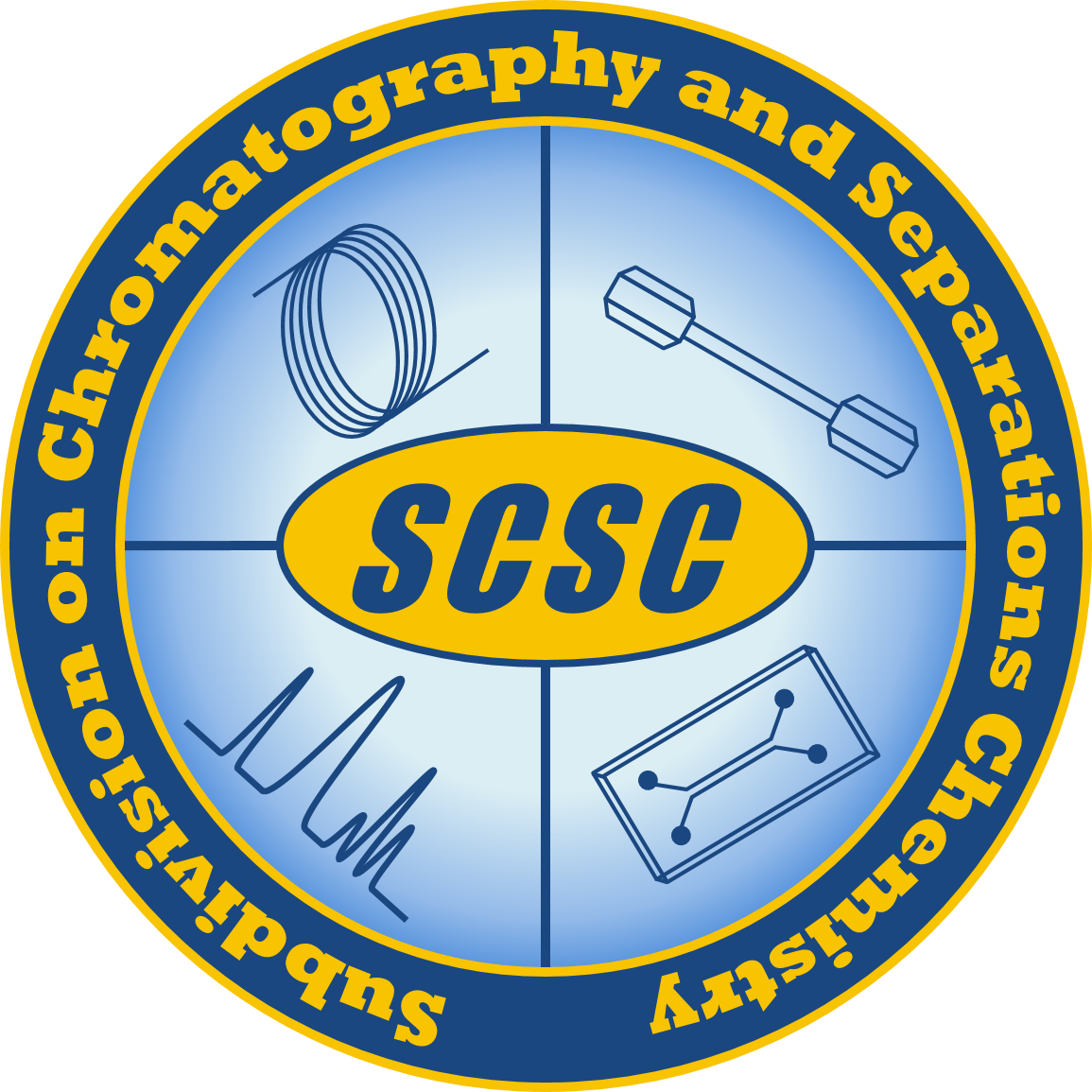The LCGC Blog: Polymers, Macromolecules, and Nanomaterials in the Separation Science Curriculum

This blog is a collaboration between LCGC and the American Chemical Society Analytical Division Subdivision on Chromatography and Separations Chemistry.
In 2015, the American Chemical Society’s Committee on Professional Training added a requirement to the ACS degree certification program that undergraduates learn about macromolecules, supramolecular aggregates, and nanomaterials (MSN) (1). This requirement can be met by a specialized course in these topics, but many programs are also choosing to distribute these topics across the curriculum (2).
As my own department came up for recertification this year, we began to discuss where and how we address polymer chemistry and related topics in our curriculum and how we might do more in this area. For distributed coverage, the ACS suggests that analytical chemistry coursework could address MSN by discussing how polymers are characterized using various techniques, including size exclusion chromatography (SEC), differential scanning calorimetry (DSC), thermogravimetric analysis (TGA), functional group titrations, light scattering (LSC), pyrolysis GC, UV or IR spectroscopy, X-ray methods, and various microscopies (1). Like many programs, our analytical curriculum places the most emphasis on the separation methods in this list, so I set out to collect some teaching resources on MSN and separation science to bolster our instruction in this area.
Chromatographic Methods to Characterize Macromolecules
GC–MS is a staple of the undergraduate analytical chemistry curriculum, so it is a likely place to add information about polymer characterization. Instructors could base an in-class activity or homework assignment on a case study from the FBI that discusses GC–MS analysis of polymer grains and other accelerants in an arson case (3). The data in this case study allow students to compare GC–MS characterization of polymers versus small molecules. Instructors could also discuss pyrolysis GC–MS, in which macromolecules are degraded into smaller fragments by heating prior to analysis. A 2015 LCGC North America article provides a good overview of the history, fundamentals, and applications of this technique (4), and the Journal of Chemical Education has published a complementary undergraduate laboratory exercise (5).
While most analytical chemistry textbooks discuss SEC as a variant of more common LC techniques, other resources for teaching this topic are also available, including a module from CHROMacademy (6); in-class questions, out-of-class problem sets, and text material from the Analytical Sciences Digital Library (7); and a Journal of Chemical Education article focused on the thermodynamics of this separation mechanism (8). There are also several laboratory experiments designed to introduce students to SEC either as a stand-alone technique or in comparison to other LC retention mechanisms (9–12).
Instructors could also touch on less common chromatographic techniques, such as field flow fractionation (FFF) (13, 14), interaction polymer chromatography (IPC) (15–17), and/or affinity chromatography (18, 19). These methods can be powerful tools for analyses of macromolecules and nanomaterials. Although they are less widely used than HPLC or GC–MS, each can be presented in comparison to more common chromatographic techniques, allowing students to refine their understanding of basic chromatographic principles by comparing and contrasting several methods. Many faculty are concerned about the proliferation of content for analytical chemistry coursework, so if class time for these alternative techniques is short, one possibility is to devote a single class period to student work in groups with each group assigned to a single method. The jigsaw method (20) or end-of-class presentations can then be used to share out group findings to the whole class.
Polymers and Nanomaterials as Separations Technologies
In addition to discussing the role of chromatography in characterizing polymers, the analytical chemistry curriculum should also emphasize the critical role that polymer materials play in modern separations (21). Molecularly imprinted polymers serve as analyte-specific stationary phases and solid-phase extraction chemistries (22, 23). Polymer gels provide size selectivity during electrophoresis, and polymer membranes are used for a range of filtration methods. Many GC stationary phases and ion exchange resins are block co-polymers, where the selectivity of the stationary phase is tuned by the relative contributions of different block chemistries. Much of this information is discussed in standard analytical chemistry textbooks, but faculty may need to help students make connections by pointing out the many places where polymers are used in separation science.
Similarly, nanomaterials are increasingly important components of separations systems, as coatings, packings, and additives (24, 25). Nanoparticles are also increasingly common in solid-phase extractions (26). While fewer pedagogical materials are currently available to address nanoparticles in separations, I routinely have my students read a paper from Mary Wirth’s laboratory on nanoparticle-packed columns and compare the work described in this paper to more routine LC separations (27). The assignments I use to guide the students’ out-of-class reading and in-class discussions are freely available through the Analytical Sciences Digital Library (28, 29).
Conclusions
Of course, the analytical chemistry curriculum can also address polymer and nanomaterials characterization in coverage of mass spectrometry (30, 31), NMR (32–34), FTIR (34), and scanning probe microscopy (35). However, separations science is a key area for polymer and macromolecular characterization (36, 37), and these materials advance separations methods for small molecules, so it makes sense to address these topics while teaching separation science. Hopefully, the references cited here will be a resource for instructors seeking to increase their coverage of MSN in the analytical curriculum.
References
1. Committee on Professional Training, Macromolecular, Supramolecular, and Nanoscale (MSN) Systems in the Curriculum (2017). https://www.acs.org/content/dam/acsorg/about/governance/committees/training/acsapproved/degreeprogram/macromolecular-supramolecular-nanoscale-supplement.pdf
2. L.L. Kosbar and T.J Wenzel, J Chem Educ, 94, 1599–1602 (2017). https://doi.org/10.1021/acs.jchemed.6b00922
3. G.V. Vaerenbergh Forensic Science Communications, 4 (2002).
https://www.fbi.gov/about-us/lab/forensic-science-communications/fsc/jan2002/van.htm
4. D.E. Raynie LCGC North America, 33, 14–17 (2015). https://www.chromatographyonline.com/view/heroic-failures-in-sample-preparation
5. P. Kusch, J Chem Educ, 91, 1725–1728 (2014).
https://doi.org/10.1021/ed5002027
6. Size Exclusion Techniques CHROMacademy. https://www.chromacademy.com/channels/biochromatography-training-courses/technique/size-exclusion-techniques/
7. T. Wenzel, Separation Science | Active Learning Materials, Analytical Sciences Digital Library, Separ Sci, (2018).
https://community.asdlib.org/activelearningmaterials/separation-science/
8. H.G. Barth, J Chem Educ, 95, 1125–1131 (2018).
https://doi.org/10.1021/acs.jchemed.8b00171
9. E.J McIntee, K.J. Graham, E.C. Colosky, and H.V. Jakubowski, J Chem Educ, 92, 2126–2129 (2015).
https://doi.org/10.1021/acs.jchemed.5b00396
10. K.K. Davis, and L.S. Brunauer, J Chem Educ, 85, 683 (2008). https://doi.org/10.1021/ed085p683
11. D. Ca, M.E. O’Donnell, B.A. Musial, S.L. Bretz, and N.D. Danielson, J Chem Educ, 86, 60 (2009).
https://doi.org/10.1021/ed086p60
12. A.L Smythers, M.M. Ford, D.G. Hawkins, M.C. Connor, K.C. Lawrence, C.R. Stanton, et al. J Chem Educ, 98, 1645–1652 (2021).
https://doi.org/10.1021/acs.jchemed.0c01269
13. M. Leeman, L. Nilsson, and M.U. Storm, LCGC Europe, 28 (2015) https://www.chromatographyonline.com/view/practical-applications-asymmetrical-flow-field-flow-fractionation-af4-review
14. C. Johan, The Column, 16, 23–26 (2020). https://www.chromatographyonline.com/view/developments-in-field-flow-fractionation-coupled-to-light-scattering
15. Y. Brun, and C.J. Rasmussen, Chapter 11 - Interaction polymer chromatography. S. In Fanali, P.R. Haddad, C.F. Poole, M.-L.Riekkola, (eds), Liquid Chromatography (Second Edition). Elsevier, 275–318 (2017).
https://www.sciencedirect.com/science/article/pii/B9780128053935000117
16. A.M. Striegel, (2020) TrAC-Trend-Anal Chem, 130, 115990 (2020). https://www.sciencedirect.com/science/article/pii/S0165993620302193
17. A. Matheson LCGC Europe, 33 (2020).
https://www.chromatographyonline.com/view/evolving-interaction-polymer-chromatography
18. S. Deo (2018) Affinity Chromatography | Active Learning Materials. Analytical Sciences Digital Library, (2018).
https://community.asdlib.org/activelearningmaterials/affinity-chromatography-2/
19. Affinity Chromatography Techniques CHROMacademy (2021). https://www.chromacademy.com/channels/biochromatography-training-courses/technique/affinity-chromatography-techniques/
20. E. Aronson (2021)
https://www.jigsaw.org/
21. M. Khodakarami and L. Alagha (2017) Polym-Plast Technol, 56, 2019–2042 (2017). https://doi.org/10.1080/03602559.2017.1298800
22. W.J. Cheong, S.H. Yang, and F. Ali, J Sep Sci, 36, 609–628 (2013).
23. Understanding and Improving SPE CHROMacademy (2021). https://www.chromacademy.com/channels/sample-preparation-training-courses/technique/understanding-and-improving-spe/
24. E. Guihen, TrAC-Trend-Anal Chem, 46, 1–14 (2013). https://www.sciencedirect.com/science/article/pii/S0165993613000551
25. P. Minakshi, M. Ghosh, B. Brar, K. Ranjan, H.S. Patki, and R. Kumar, (2020) In Mustansar Hussain, C. (ed), Handbook of Nanomaterials in Analytical Chemistry. Elsevier, pp. 99–158 (2020). https://www.sciencedirect.com/science/article/pii/B9780128166994000062
26. J. González-Sálamo, D. A. Verla-Martínez, C.Cairós, M. Á.González-Curbelo, and J. Hernández-Borges, Chromatography Online, 33, 5–11 (2020). https://www.chromatographyonline.com/view/nanomaterials-have-come-to-stay-an-overview-of-their-use-as-sorbents-in-sample-preparation
27. B. Wei, D.S. Malkin, and M.J. Wirth, Anal Chem, 82, 10216–10221 (2010). https://doi.org/10.1021/ac102438w
28. M. L. Kovarik (2018) Interpreting the Primary Literature | Active Learning Materials. Analytical Sciences Digital Library, (2018).
https://community.asdlib.org/activelearningmaterials/interpreting-the-primary-literature/
29. M.L. Kovarik, Anal Bioanal Chem, 408, 3045–3049 (2016). https://link.springer.com/article/10.1007/s00216-016-9467-2
30. R.P.Lattimer, M.J. Vergne, and D.M. Hercules, J Chem Educ, 84, 81 (2007). https://doi.org/10.1021/ed084p81
31. J. Robinson, and M.L. Kovarik, Biological Mass Spectrometry: Proteomics, Active Learning Materials, (2016).
http://community.asdlib.org/activelearningmaterials/biological-mass-spectrometry-proteomics/
32. J.U. Izunobi, and C.L. Higginbotham, J Chem Educ, 88, 1098–1104 (2011).
https://doi.org/10.1021/ed100461v
33. J.W. Wackerly and J.F. Dunne, (2017) J Chem Educ, 94, 1790–1793l (2017). https://doi.org/10.1021/acs.jchemed.6b00814
34. A.T. Royappa, J Chem Educ, 79, 81 (2002).
https://doi.org/10.1021/ed079p81
35. R.Wilson and H. Bullen, Introduction to Scanning Probe Microscopy, Analytical Sciences Digital Library, (2007).
https://asdlib.org/onlineArticles/ecourseware/Bullen/SPMModule.htm
36. A.M. Striegel, Anal Bioanal Chem, 399, 1399–1400, (2011).
https://doi.org/10.1007/s00216-010-4480-3
37. K. A. Schug, J Sep Sci, 39, 638–639 (2016). https://analyticalsciencejournals.onlinelibrary.wiley.com/doi/abs/10.1002/jssc.201670044
Michelle L. Kovarik

Michelle L. Kovarik is an Associate Professor of Chemistry at Trinity College in Hartford, Connecticut. She received her PhD in Analytical Chemistry from Indiana University (Bloomington, Indiana) in 2009. She was a postdoctoral scholar from 2010–2013 at the University of North Carolina, Chapel Hill, North Carolina. Her current interests include microchip electrophoresis with laser-induced fluorescence detection; microfluidic single-cell analysis; and kinase and peptide assays in Dictyostelium discoideum. She is the recipient of numerous honors and awards, including the Arthur H. Hughes Award for Achievement in Teaching, Trinity College (2019). She is a member of the American Association for the Advancement of Science (AAAS); the American Chemical Society (ACS); and the curriculum development team and workshop facilitator for the Analytical Sciences Digital Library Active Learning group (2014–present). Since 2004, she has published 25 peer-reviewed manuscripts and given 32 presentations at local, regional, national, and international meetings.

This blog is a collaboration between LCGC and the American Chemical Society Analytical Division Subdivision on Chromatography and Separations Chemistry (ACS AD SCSC). The goals of the subdivision include
- promoting chromatography and separations chemistry
- organizing and sponsoring symposia on topics of interest to separations chemists
- developing activities to promote the growth of separations science
- increasing the professional status and the contacts between separations scientists
For more information about the subdivision, or to get involved, please visit https://acsanalytical.org/subdivisions/separations/.
Fundamentals of Benchtop GC–MS Data Analysis and Terminology
April 5th 2025In this installment, we will review the fundamental terminology and data analysis principles in benchtop GC–MS. We will compare the three modes of analysis—full scan, extracted ion chromatograms, and selected ion monitoring—and see how each is used for quantitative and quantitative analysis.
Characterizing Plant Polysaccharides Using Size-Exclusion Chromatography
April 4th 2025With green chemistry becoming more standardized, Leena Pitkänen of Aalto University analyzed how useful size-exclusion chromatography (SEC) and asymmetric flow field-flow fractionation (AF4) could be in characterizing plant polysaccharides.
Rethinking Chromatography Workflows with AI and Machine Learning
April 1st 2025Interest in applying artificial intelligence (AI) and machine learning (ML) to chromatography is greater than ever. In this article, we discuss data-related barriers to accomplishing this goal and how rethinking chromatography data systems can overcome them.
Quantifying Microplastics in Meconium Samples Using Pyrolysis–GC-MS
March 26th 2025Using pyrolysis-gas chromatography and mass spectrometry, scientists from Fudan University and the Putuo District Center for Disease Control and Prevention detected and quantified microplastics in newborn stool samples.

